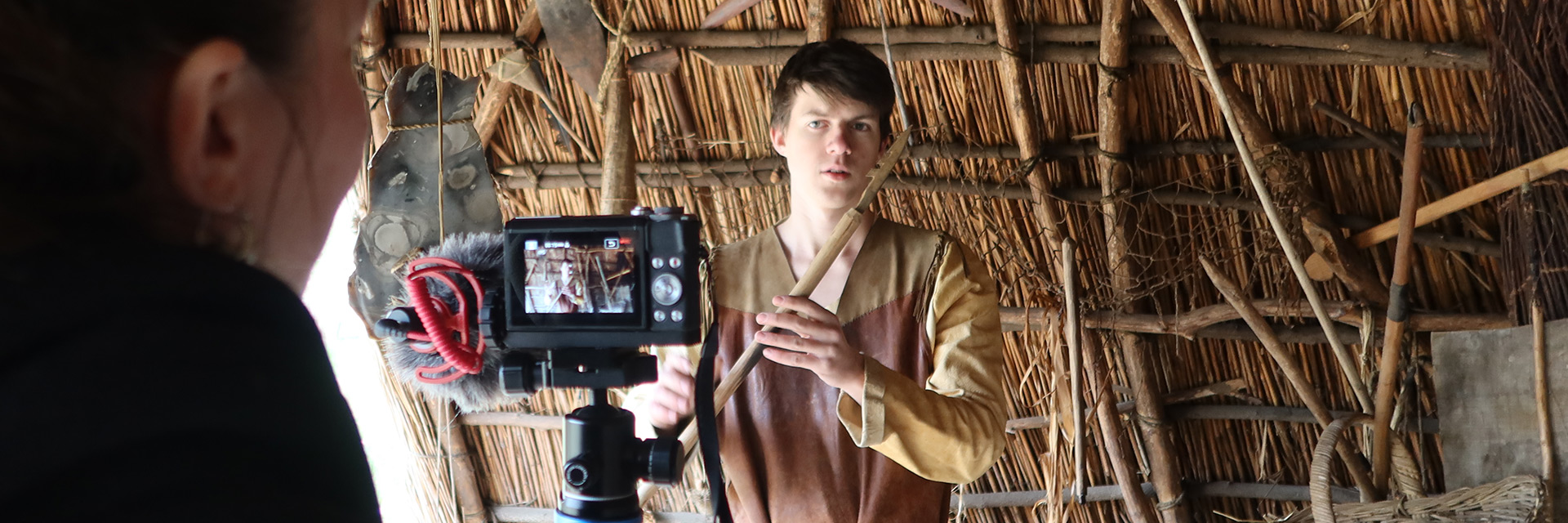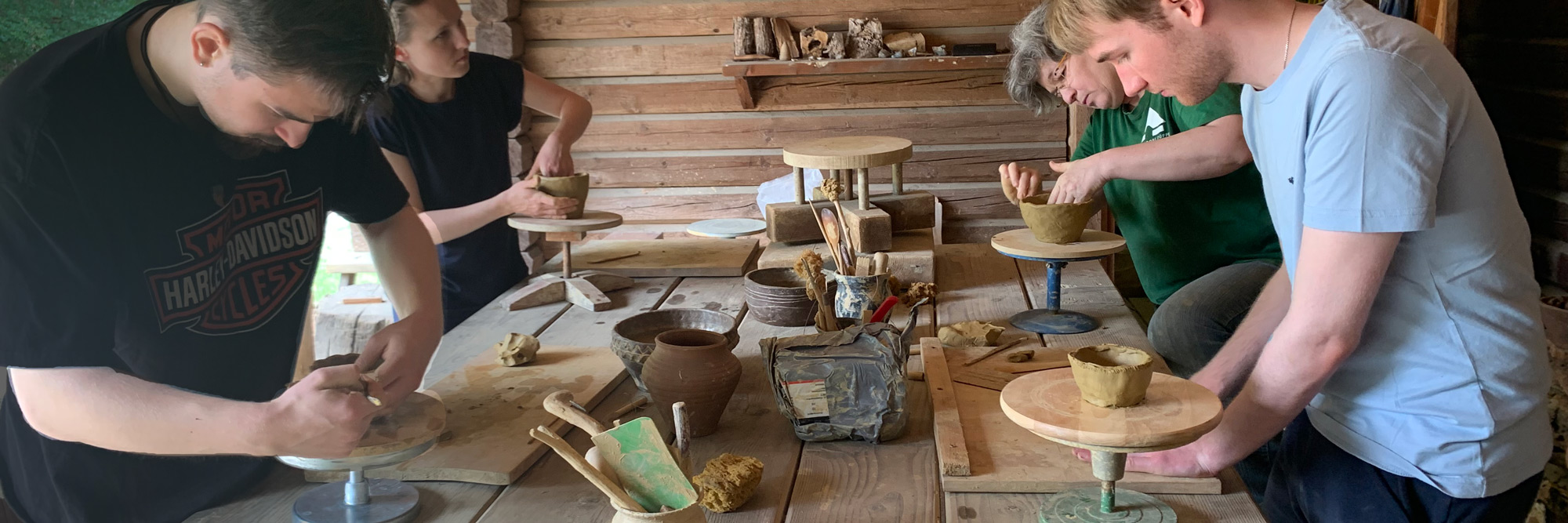Craft Activity Documentation
The craft activity documentation system was developed based on the vast experience accumulated by one of the largest open-air museums in Europe, the ASTRA Museum in Sibiu, Romania. We added to that contributions of the other RETOLD project partners. It is user friendly, both for those who fill it in (curators, researchers or volunteers) and those who read it (either colleagues or the interested public). We kept it simple, yet it contains all the relevant information about crafts.

The structure
The order of the sections is based on the work flow. The first three sections (Summary, Crafter and Documenter) can be added some days before the actual event. The 4th section (Tools and Materials) will be filled in a little later, possibly just before the event itself. Sections 5-7 (Process, Reflection and Outcome) will be collected on the day of the event, or just after.
The craft video is a separate item, but very important. It will be produced during the event, but edited and added afterwards.
That specific order allows the documenter to add and save information in stages.
Once the documentation is completed, parts of it can be shared to or viewed by different audiences, depending on the settings. For their purpose, the order of information will be changed. For example we start with the video and a short explanation, followed by the crafter and the process.
Before you start
Before you start documenting, please check all the fields, decide which optional fields you like to fill in and collect the information necessary beforehand. You need to please consider beforehand how the fields are filled in. Much information needs to come from the crafter; they need to know that you need their help. Please check also Preparing your Digital Material.
Setting Up
Before filling out the documentation form itself, you need to set things up. Here you define things and people which pop up later in your documentation, think of the crafter, documenter, tools, and installations. Imagine that what you define here, can be re-used in any next documentation form.
The craft activity documentation system is structured as follows:
The first section (Summary) contains general data about the craft: the name of the craft, its type and category, a brief description of it, as well as the historical period, historical and modern geographical boundaries of the manifestation of the craft. Regarding the type of craft, we have formulated three options that can be chosen by the person completing the form, namely: traditional, when it comes to crafts that are still practiced by authentic craftspeople, historical when the craft is no longer practiced, but there are historical testimonies about its existence (practice), and archaeological, when the main source is archaeological evidence.
As to the categories, they are the classic ones such as: processing of clay, wood, stone, glass, vegetable and animal fibres, or a new category can be added if the craft does not fit into the predefined list. The advantage of this approach is that by completing the list at a given time you will end up with a glossary of all crafts from all corners of the world.

The second section (Crafter) is dedicated to the craftspeople and their experience. You defined the craftsperson already in the setting up, here you collect information connected to this specific craft activity: their main occupation, the role they have in the documentation activity, as a craftsperson who does this activity for demonstration purposes, or someone who does it on a daily basis, the experience that they have and when they started, the motivation for learning the craft, where they normally work, e.g. if they have a rural or urban workshop or in a museum, whether they also practice other crafts and if they have contacts with other craftspeople.
Information is also required on how they learned the trade, whether they were an apprentice or acquired the skill through formal training. Furthermore, information is captured on whether they experimented with the craft based on historical or archaeological sources, whether they sourced information through specialized literature, paintings, or other material. This section also allows for data to be captured on how to pass the craft on to new generations, formally or informally.

The third section (Documenter) is dedicated to general data related to who documents and where the craft activity is documented. Thus, there is information such as the country where the documentation is done, the name and data of the institution that organizes the documentation process, the name and role of the personnel who carries out the documentation, the context in which it is carried out, the location, and when it was carried out. The Documenter is added in the Setting Up phase.
The next section (Materials) covers the details of the materials used here. Considering the raw materials used, they can be entered successively with their name, how they are prepared, used and how they were obtained: by collection, directly from nature, following certain rules or by purchase.
As tools and installations can be used in more crafts, they are added outside of the present craft form (in the Setting Up phase), and "called on" when needed.

The fifth section (Process) The most important part of documenting a craft activity consists of information about the working techniques used and the sequence of the phases. To document each work stage, the techniques, materials, and tools used are described. If the produced object is decorated, a description of the techniques, the tools, but also the motifs represented are included.
The sixth section (Reflection) is about reflection on the methods and sources used. We collect information on what the historical or archaeological sources are for the process, if the crafter has deviated from historical or archaeological accuracy for various reasons, improving products or the process of making products. Finally we discuss best practices related to keeping the workshop clean and the management of losses of products or used materials.

The seventh section (Outcome) of the form is dedicated to the resulting final outcome or product. Besides the name and description of the product, there is also information related to the use of the product, in what way and by whom, how long it can be used and whether it was made with the aim of being sold or distributed in another way.
This is partly based on:
George Tomegea, 2024. RETOLD: Craft Documentation – as Part of the RETOLD Project, EXARC Journal Issue 2024/2, https://exarc.net/ark:/88735/10747.

